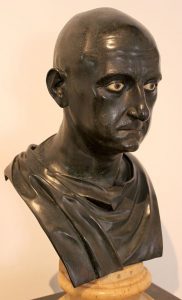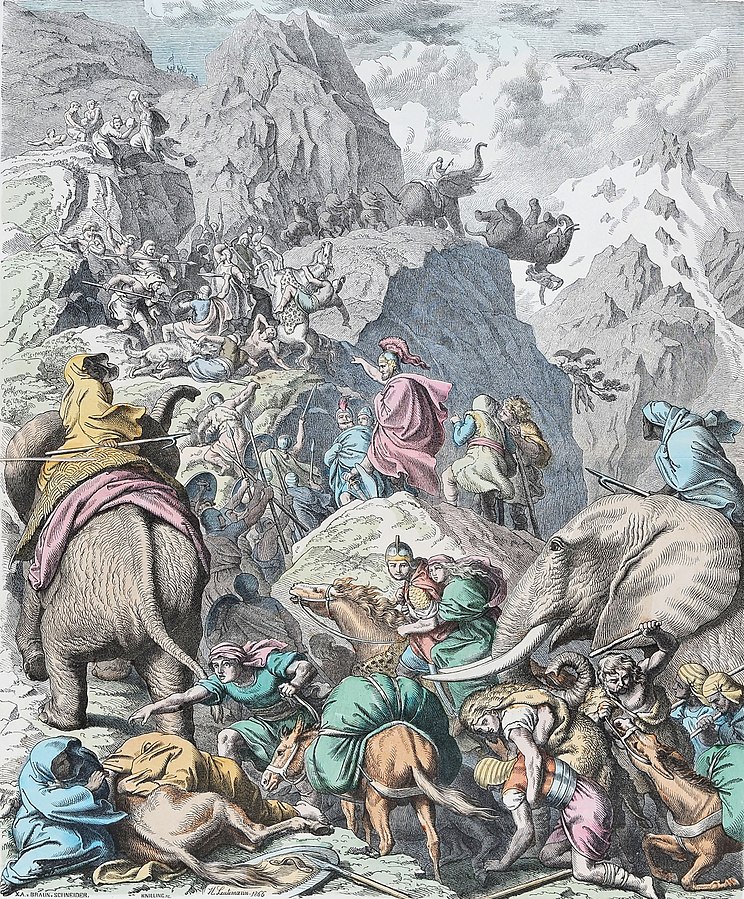
If you’re an avid fan of HBO’s Game Of Thrones and can’t wait for the final season to debut in 2019, or, better yet, have been waiting 6 years for The Winds of Winter, then this post may help whet your appetite for all things Westeros and beyond until the Starks, White Walkers, Targaryens, and Lannisters return to the screen.
As has been written elsewhere, George R. R. Martin took inspiration for his epic fantasy from the history of England, particularly the War of the Roses, a contest for the throne of England in the late medieval era that pitted the northern York family against the southern Lancasters for control of England’s throne. However, his wider world of Essos and Westeros is inspired by human history as well. Today, I’m going to examine the historical inspirations for the Valyrian Freehold, or just Valyria, the dragon-taming empire that controlled much of Essos and whence the Targaryen family came to build Dragonstone in the Narrow Sea centuries before Aegon the Conqueror and his sister-queens conquered the Seven Kingdoms.
Valyria influences every civilization in Martin’s world. Its infrastructure was incredible, its knowledge of philosophy, magic, science, and history deep, and its government a template for many of the free cities. Its closest historical corollary is therefore that of the Ancient Roman Republic and Empire. Like the Roman Republic, Valyria began as a small city-state on a peninsula (Italy) in southern Essos (Europe). Both Rome and Valyria were ruled by an elite class of aristocrats, the patricians and dragon-riders respectively. Over time, both city-states expanded to control their peninsula and a wider geographic area, expanding their empires into one dominated by citizen freeholders who owned massive estates, engaged in an extensive network of trade in luxury goods and slaves, and spread a form of aristocratic republicanism to their conquered places.

Most notably, both Rome and Valyria engaged in cataclysmic wars of conquest against rival peoples and empires for control of the trade, politics, and territories of the Mediterranean and of Essos. For Rome, these were the famous Punic Wars that the city-state-turned-empire fought against the Phoenician maritime city-state of Carthage. Rome fought three deadly wars against the Carthaginians until finally destroying its rival completely and sowing the fields of this once-mighty trade empire with salt to prevent it from ever gaining power again. Such brutality showed that Rome did not take the threat of Carthage lightly and meant its victory to be brutal and final.

In the lands of Ice and Fire, Valyria meets its Carthaginian-inspired match in the empire of Old Ghis, a confederation of city-states known for their control of the international slave trade. In a series of (surprise) three wars against Old Ghis, the Valyrian freehold conquered and destroyed Ghis’s cities and fleets with the added advantage of dragon fire. Once the conquest was complete, the Valyrians sowed the fields around the city of Old Ghis with salt and the slavers of Old Ghis became the enslaved subjects of Valyria.
These wars were foundational for the Roman Republic’s empire as much as they were for Valyria and, with their major rivals out of the way, both Rome and Valyria became the dominant powers in the Mediterranean and western Essos. Like the Gallic and Celtic tribes of Western Europe who fell before the might of Rome (and Julius Caesar), so too did the people of the Rhôyne, Essos’s equivalent to the Danube or Rhine, fall to Valyria. These conquests made all of central Essos a part of the Valyrian Empire and, for many centuries, brought political stability to the wider world. Such a Valyrian Peace has its precedents in none other than the Pax Romana of Rome, a period of roughly two centuries wherein the Roman Empire used its laws, military, and economic might to govern the Mediterranean world of Western Europe, North Africa, the Middle East, and the Greek world. Here again, Martin tips his hat to Rome.
By the time of the War of the Five Kings, however, Valyria has disappeared in a dramatic event known as the Doom of Valyria. This event is more inspired by the legend of Atlantis (or Tolkien’s Numenor for the oh-so-enlightened readers of this post) than the Fall of Rome. Just like Medieval Europe, however, where Rome’s legacy influenced law, philosophy, and models of leadership, the legacy of Valyria, especially its magic and technology, imbues itself in Westeros. Moreover, the simple awareness, or lack thereof, that the Westerosi people have of Valyrian technology and magic is similar to the traditional view of Medieval Europe as a backwards civilization that had lost all knowledge of the Romans. Here again Martin builds his world, and why magic is so unknown and mysterious, on the foundation of the history of Rome’s legacy and relation to Medieval Europe.
The next time you read about Westeros, pick up A Song of Ice and Fire, or watch Game of Thrones and hear of Valyria, remember that it would be just as easy to substitute the word “Roman” for “Valyrian” and the history of Westeros would remain relatively unchanged…except for the dragons and White Walkers of course.
